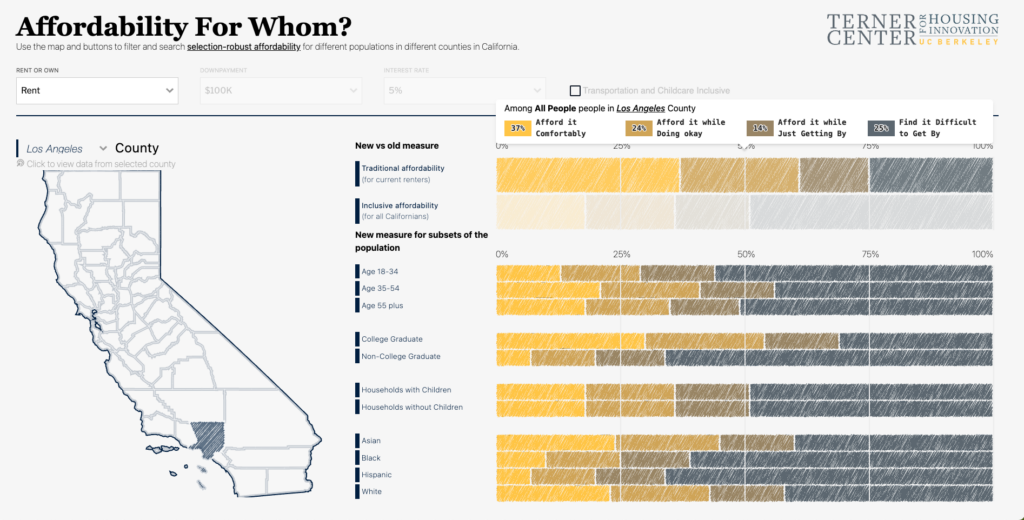Affordability for Whom? Introducing an Inclusive Affordability Measure
Published On May 2, 2024
A new paper and interactive tool from the Terner Center, authored by Dan Shoag and Issi Romem at MetroSight and our Faculty Research Advisor Carolina Reid, introduces a new approach to measuring housing affordability.
Affordability for Whom?: Introducing an Inclusive Affordability Measure shows how existing affordability metrics often fail to account for who can live or work in a city and overlook the broader spectrum of household expenses linked to location, such as transportation and childcare.

The new metric considers not just current residents, but also those potential residents who are cut out of living in a place due to high housing costs. The interactive tool presents this new measure in an interactive, web-based format, allowing the user to explore the affordability conditions for existing and potential households across California’s counties.





